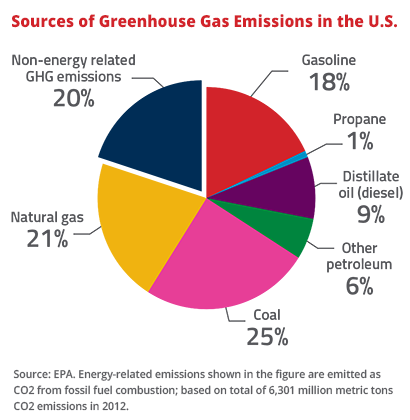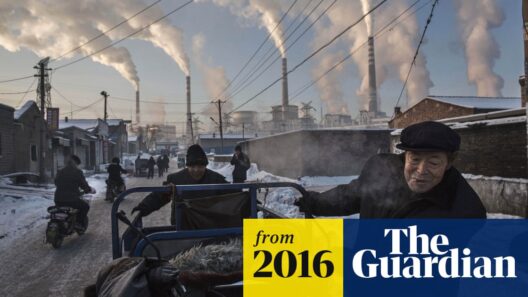In the theater of energy production, where various actors vie for the role of the best fuel, the duel between propane and natural gas is particularly compelling. Propane, often regarded as the underdog, boasts an array of attributes that some argue make it a more favorable alternative to natural gas, especially when scrutinizing their environmental footprints. However, to understand this ongoing contention, one must delve deeply into the catacombs of carbon emissions and the broader implications of global warming.
When discussing the combustion of fossil fuels, it’s essential to consider the emotional weight of carbon emissions. Each molecule released into the atmosphere acts like a villain in a story of planetary destruction, clingingly wrapping the Earth in a warming cocoon. In this narrative, propane and natural gas utilize different scripts to deliver their performances. Propane, a byproduct of both crude oil refining and natural gas processing, stands out as a fuel with a lower carbon content per energy unit when combusted—the proverbial lighter character on the stage.
Natural gas, primarily composed of methane, presents a different dilemma. When burned, it emits approximately 50% less carbon dioxide compared to coal but is still notably higher than propane. Propane’s combustion results in a cleaner burn, producing fewer carbon emissions and particulate matter. This nuanced distinction reshapes how we address climate change, illustrating a possible pathway to mitigating the warming climate.
Yet, the allure of propane is not solely rooted in its emissions profile. There is a captivating tale to be told about its versatility. Propane can be employed in a myriad of applications—from residential heating to powering vehicles. The flexibility that propane offers is akin to an actor who can seamlessly transition between a lead role and minor supporting parts, adapting to fit the requirements of various scenes. With an infrastructure already in place in many areas, propane supplies can be leveraged effectively without the drawn-out processes often necessary to build extensive natural gas pipelines.
However, the conversation becomes more complex when examining leaks. Methane is notorious for being a formidable greenhouse gas. While natural gas emissions are often touted as a cleaner alternative, leakage during extraction and transport significantly diminishes its environmental advantages. Recent studies have illuminated that, in certain situations, the methane emitted during the lifecycle of natural gas can offset its seemingly lower CO2 emissions. This revelation casts a shadow on natural gas, revealing the cracks in its façade as a more environmentally friendly option.
Nonetheless, the battle does not conclude with the environmental merits of combustion. The logistics of supply chains complicate the debate further. Natural gas requires an extensive network of pipelines, which can incur inefficiencies and even pose risks of rupture and explosion. In contrast, propane, transported in smaller tanks or through less extensive networks, allows for a more localized approach, reducing the risk of environmental calamity brought on by pipeline failures.
As climate advocates scrutinize the trade-offs between propane and natural gas, the issue of renewability comes to the forefront. Both fuels, while derived from fossil sources, offer unique paths towards obtaining cleaner energy. Propane can be made from renewable sources through processes such as biomass conversion, positioning it as a potential bridge fuel in the transition away from fossil reliance. This unique versatility frames propane not merely as a competitor, but as a potential collaborator in the quest for sustainable energy solutions.
However, reflects the complexity of modern energy consumption, shifting reliance on propane or natural gas must also consider economic, societal, and environmental justice dimensions. There remains a substantial population for whom the financial implications of energy choices are paramount. Transitioning to propane may yield immediate environmental benefits but does it extend accessibility to all demographics? This question amplifies the discourse and needs consideration as we progress towards a sustainable energy future.
When juxtaposed against the burgeoning tide of renewable energy sources like solar and wind, both propane and natural gas appear as transient players—interim solutions in the climatic saga. Nonetheless, there lies an intrinsic value in objectively analyzing their roles. While one carries conventional connotations of reliability and the other signifies a progressive leap into cleaner burning, both need to be reassessed in light of technological advancements and evolving energy needs.
As such, the question arises: does propane truly beat natural gas in the global warming debate? The answer remains elusive. Propane’s lower emissions and adaptability are compelling advantages, casting it in a favorable light for immediate and localized energy needs. However, significant concerns about methane leakage from natural gas and the infrastructure required to support it further complicate the narrative. The clear path forward may not lie in a definitive victory for one over the other but rather in discerning how each plays a role in the larger symphony of climate action.
In conclusion, the global warming debate reflects the intricate dance between energy sources—a multitude of players vying for their places on the stage while delivering performances that impact the world’s climatic future. Propane and natural gas, both grounded in fossil fuel origins, must be examined through the lens of their environmental implications, logistical challenges, and potential for innovation. The collective efforts to combat climate change will require not just decisions of preference but a comprehensive understanding of each fuel’s impact across diverse spectrums. Only then can humanity pivot away from its carbon-laden past towards a brighter, more sustainable future.








